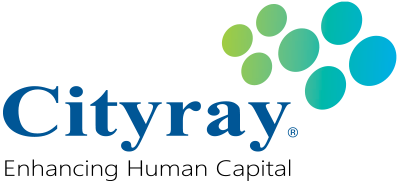What is timesheet system | Employment timesheet
What is timesheet system
Timesheet system is a tool for HR or management to track the time of work during the period.
Timesheet system definition
The Timesheet System plays a pivotal role in the day-to-day operations of organizations in Malaysia and Singapore, offering a comprehensive solution for accurately tracking and recording employees’ working hours. With its robust features and functionalities, this indispensable tool provides a seamless and efficient method for capturing crucial attendance data. By precisely documenting employees’ work hours, the system simplifies the intricate process of payroll processing, ensuring that employees receive accurate and timely compensation.
Beyond its fundamental function of time tracking, the Timesheet System serves as a valuable compliance tool, assisting organizations in adhering to labour regulations and statutory requirements. By accurately recording working hours, breaks, and overtime, businesses can confidently demonstrate compliance during audits and avoid potential legal repercussions.
Moreover, the Timesheet System acts as a centralized repository for essential attendance data, allowing businesses to generate insightful reports and analytics. This empowers management to gain valuable insights into employee productivity, resource allocation, and project management. By analyzing these reports, organizations can identify patterns, trends, and areas for improvement, ultimately optimizing operational efficiency and driving better decision-making.
Additionally, the Timesheet System promotes transparency and accountability within the organization. Employees can easily record their working hours, providing visibility into their availability and contributing to an atmosphere of trust. Supervisors and managers can review and verify the accuracy of timesheets, fostering an environment of open communication and ensuring fair compensation for employees.
Furthermore, the Timesheet System offers a user-friendly interface that simplifies the process of time entry and attendance management. With intuitive features and customizable options, employees can conveniently input their work hours, select relevant projects or tasks, and include any additional notes or comments. This streamlined approach saves time for both employees and HR personnel, allowing them to focus on more strategic initiatives.
What is the time entry?
Time entry is a vital practice for organizations seeking to ensure precise monitoring and assessment of their workforce’s productivity and efficiency. By implementing a reliable time entry system, businesses can effectively track and evaluate employees’ working hours with enhanced accuracy. This enables companies to gain valuable insights into individual and team performance, allocate resources efficiently, and make informed decisions to optimize processes.
Within a Timesheet System, employees are empowered to log their work hours conveniently through a dedicated platform or software. This user-friendly interface allows them to input essential details including the date, start time, end time, break periods, and any pertinent notes or comments related to their work activities.
The implementation of a streamlined time entry system not only improves accuracy in recording work hours but also cultivates a culture of accountability and transparency. Employees are encouraged to take ownership of their time and actively participate in monitoring their productivity. This not only enhances engagement but also contributes to a more motivated and productive workforce.
In summary, time entry is a critical process for organizations aiming to accurately track and document employees’ work hours. By implementing a reliable time entry system, businesses can ensure precise wage calculations, comply with labour regulations, and gain valuable insights into workforce productivity. This promotes transparency, facilitates effective resource allocation, and drives overall organizational success.
Why should businesses use a timesheet system?
There are numerous compelling reasons for businesses to embrace the utilization of a timesheet system. Firstly, it ensures the precision of payroll processing by accurately calculating employee wages based on recorded work hours, eliminating the possibility of manual errors and discrepancies. Compliance with labour regulations is another significant advantage, as timesheet systems enable businesses to adhere to laws governing working hours, breaks, overtime, and other statutory requirements. Moreover, these systems offer valuable insights into resource allocation and project management, empowering businesses to monitor employee time allocation across various projects or tasks and optimize resource utilization for heightened productivity. Timesheets also play a pivotal role in performance evaluation and incentive programs, allowing managers to evaluate individual or team productivity, pinpoint areas for improvement, and appropriately reward high achievers. Additionally, timesheets contribute to cost control and budgeting efforts by tracking employee hours and project expenses, enabling informed decision-making regarding resource allocation and budget adjustments. The data and analytics generated by timesheet systems further enable data-driven decisions, enhance strategic planning capabilities, and identify opportunities for process enhancement. Lastly, these systems are particularly advantageous in managing remote and mobile workforces, as they allow employees to conveniently log their work hours from anywhere, ensuring accurate time tracking and effective management of geographically dispersed teams. Overall, implementing a timesheet system offers businesses enhanced accuracy, efficiency, transparency, and compliance in tracking and managing employee work hours, ultimately leading to heightened productivity and improved profitability.
Features of the timesheet system
Project Management:
In our timesheet system, every team member has the capability to create their own projects. However, the individual who initiates and creates the project assumes the role of the team lead, responsible for guiding and overseeing the project’s progress. This ensures a collaborative and inclusive approach to project management. Additionally, teammates have access to view and retrieve relevant project information, fostering transparency and effective communication within the team.
Time Management:
Our Time Sheet System empowers both the team lead and team members to conveniently record their check-in and check-out times. By selecting the respective project, they can accurately log their time spent on specific tasks or activities. This systematic time tracking enables efficient monitoring of work hours, facilitates payroll processing, and provides valuable data for performance evaluation and project analysis.
Check-In/Out Record:
With our Check-In/Out Record functionality, team leads and team members can easily create check-in and check-out records by selecting the appropriate project. This feature ensures accurate time tracking and documentation of work hours. Furthermore, we offer the flexibility to save check-in/out records and scan QR codes at a later time if the client is unavailable to present the QR code immediately. This ensures the integrity and reliability of the time records even in situations where real-time scanning is not feasible. Clients themselves can also generate project-specific QR codes, allowing the team to scan and create verified check-in/out records, enhancing accountability and transparency.
Report Management:
Our comprehensive Report Management feature encompasses various aspects of worklog and billing reporting. ctimesheet provides a detailed worklog report that illustrates essential information such as the date, time, individuals involved, and services delivered. This comprehensive report enables a clear understanding of the team’s activities and progress. Additionally, our charge report feature offers a consolidated view of billing information, allowing businesses to analyze and generate invoices for specific periods of time. This streamlines the billing process and ensures accurate financial reporting.
By incorporating these features into our platform, we provide businesses with a holistic project management solution, empowering teams to effectively track time, maintain accurate records, and generate insightful reports for better decision-making and streamlined operations.
What is the benefit of using an employment timesheet?
Using an employment timesheet offers several benefits for businesses:
Accurate Recording of Work Hours:
An employment timesheet allows employees to record their work hours accurately. This ensures that the hours worked by each employee are documented, facilitating precise tracking and calculation of wages.
Streamlined Payroll Processing:
With employment timesheet in place, payroll processing becomes more efficient. Timesheets provide a clear record of hours worked, making it easier for payroll administrators to calculate salaries, deductions, and any overtime or additional payments accurately. This reduces the likelihood of errors and saves time in the payroll process.
Compliance with Labour Regulations:
Employment timesheet helps businesses comply with labour regulations, such as minimum wage requirements, maximum working hours, and overtime regulations. By accurately recording and documenting work hours, businesses can demonstrate compliance during audits and ensure that employees’ rights are upheld.
Improved Resource Allocation:
By tracking work hours through employment timesheet, businesses gain insights into resource allocation and workforce planning. Timesheets provide data on how employees allocate their time across different tasks or projects, allowing managers to optimize resource utilization and assign work more effectively.
Performance Evaluation and Productivity Analysis:
Employment Timesheet serve as a valuable tool for evaluating employee performance and analyzing productivity. By reviewing timesheet data, managers can assess individual and team performance, identify areas for improvement, and provide feedback or incentives based on accurate records of time spent on work activities.
Project Costing and Budget Management:
Employment Timesheet enable businesses to monitor and control project costs more effectively. By tracking the hours spent by employees on specific projects or tasks, businesses can accurately allocate costs, estimate project budgets, and identify potential areas of overspending or inefficiency.
Data-Driven Decision-Making:
Employment Timesheet provide valuable data and insights that can inform decision-making. By analyzing timesheet data, businesses can identify patterns, trends, and areas of improvement. This data-driven approach helps in strategic planning, resource allocation, and identifying opportunities for increased productivity and profitability.
Purpose of Cityray timesheet system – ctimesheet
For Team:
Implementing a timesheet system provides teams with a comprehensive log record of the services delivered. This ensures that every task or service performed is accurately recorded, allowing team members to maintain a detailed account of their work activities. The timesheet system serves as a reliable repository of information, enabling team members to track their progress, review completed tasks, and reference past services rendered. This log record fosters transparency and accountability within the team, facilitating effective communication, collaboration, and a heightened sense of ownership over their work.
For Manager:
Utilizing a timesheet system offers managers enhanced capabilities in managing team members who perform onsite services. The system provides a centralized platform where managers can conveniently track and oversee the activities of their team members. By accessing the timesheets, managers can monitor the progress of each team member, verify completed services, and gain valuable insights into their on-site performance. This streamlined management approach allows for the efficient allocation of resources, identification of training needs, and timely interventions to ensure optimal service delivery. With real-time access to timesheet data, managers can make informed decisions, address any challenges promptly, and foster a productive and motivated workforce.
For Client:
Implementing a timesheet system provides clients with tangible evidence of on-site service provision. Each recorded timesheet serves as proof of the services rendered, including the specific tasks performed and the duration of the service. This evidence instils confidence in clients, as they can review the timesheets to verify the completed work and ensure adherence to agreed-upon service levels. The timesheet system also enables effective communication between clients and service providers, as clients can reference the timesheets to discuss any concerns, provide feedback, or seek clarification on the services received. This transparency builds trust and strengthens the client-provider relationship, resulting in a positive and satisfactory service experience.




